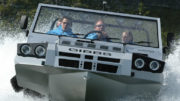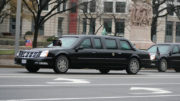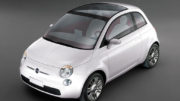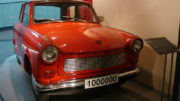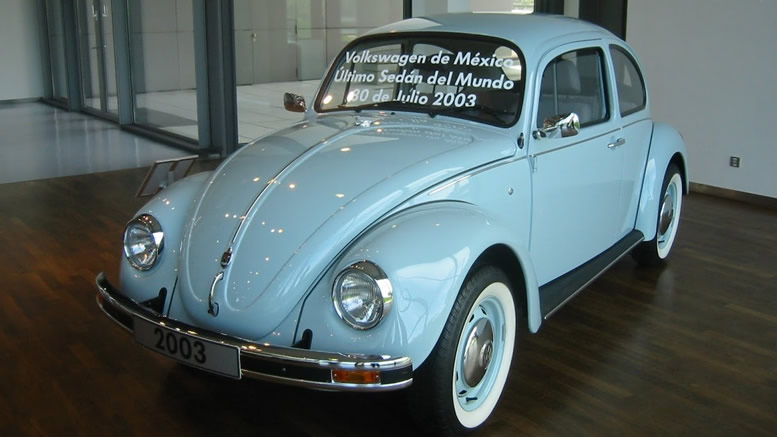 The origins of the Volkswagen date back to 1930s Nazi Germany, and the project to build the car that would become known as the Beetle. Hitler was good at marketing his government to the German people, he commissioned several large projects to win their favour, one project was to build a car that everyone could afford. The project fitted with a proposal by car designer Ferdinand Porsche. The intention was that ordinary Germans would buy the car by means of a savings scheme, which around 336,000 people eventually paid into. Prototypes of the car called the KdF-Wagen (German: Kraft durch Freude = strength through joy), appeared from 1936 onwards. The car already had its distinctive round shape and air-cooled, flat-four, rear-mounted engine.
The origins of the Volkswagen date back to 1930s Nazi Germany, and the project to build the car that would become known as the Beetle. Hitler was good at marketing his government to the German people, he commissioned several large projects to win their favour, one project was to build a car that everyone could afford. The project fitted with a proposal by car designer Ferdinand Porsche. The intention was that ordinary Germans would buy the car by means of a savings scheme, which around 336,000 people eventually paid into. Prototypes of the car called the KdF-Wagen (German: Kraft durch Freude = strength through joy), appeared from 1936 onwards. The car already had its distinctive round shape and air-cooled, flat-four, rear-mounted engine.
The new factory in the new town of KdF-Stadt, now called Wolfsburg, purpose-built for the factory workers, had only produced a handful of cars by the time war started in 1939. Consequently the first volume-produced versions of the car were military vehicles, the jeep-like Kübelwagen and the amphibious Schwimmwagen.
The company owes its postwar existence largely to one man, British army officer Major Ivan Hirst (1916-2000). In April 1945 KdF-Stadt and its heavily bombed factory were captured by the Americans, and handed to the British to administer. The factory was placed under the control of Hirst. At first the plan was to use it for military vehicle maintenance. Since it had been used for military production, and had been a “political animal” (Hirst’s words) rather than a commercial enterprise, the equipment was in time intended to be salvaged as war reparations. Hirst painted one of the factory’s cars green and demonstrated it to British army headquarters. Short of light transport, in September 1945 the British army was persuaded to place a vital order for 20,000. The first few hundred cars went to personnel from the occupying forces, and to the German Post Office. By 1946 the factory was producing 1000 cars a month, a remarkable feat considering the factory was still in disrepair: the damaged roof and windows meant rain stopped production; the steel to make the cars had to be bartered with new vehicles.
The car and its town changed their Second World War-era names to Volkswagen (meaning peoples car) and Wolfsburg respectively, and production was increasing. It was still unclear what was to become of the factory. It was offered to representatives from the British, American and French motor industries. Famously, all rejected it. After an inspection of the plant Sir William Rootes, head of one of the largest British car companies, told Hirst the project would fail within two years, and that the car “is quite unattractive to the average motorcar buyer, is too ugly and too noisy … If you think you’re going to build cars in this place, you’re a bloody fool, young man.” Ford representatives agreed: the car was “not worth a damn”.
From 1948, Volkswagen became a very important element, symbolically and economically, of West German regeneration. Heinrich Nordhoff (1899-1968), a former senior manager at Opel who had overseen civilian and military vehicle production in the 1930s and 1940s, was recruited to run the factory in 1948. In 1949 Hirst left the company, now re-formed as a trust controlled by the West German government. Apart from the introduction of the “Type 2” commercial vehicle (van, pickup and camper) and the Karmann Ghia sports car, Nordhoff pursued the one-model policy until shortly before his death in 1968. Production of the “Type 1” VW Beetle (German: ‘Käfer’, US: ‘Bug’, French: ‘Coccinelle’, Brazil: ‘Fusca’) increased dramatically over the years, the total reaching 1 million in 1954.
During the 1960s and early 1970s, although the car was becoming out-dated, American exports, innovative advertising and a growing reputation for reliability helped production figures to surpass the levels of the previous record holder, the Ford Model T. By 1973 total production was over 16 million.
VW expanded their product line in 1967 with the introduction of several “Type 3” models, which were essentially body style variations (Fastback, Notchback, Squareback) based on “Type 1” mechanical underpinnings, and again in 1969 with the relatively unpopular “Type 4” (also known as “411” and “412”) models, which differed substantially from previous models with the notable introduction of Unibody construction, a fully automatic transmission and fuel injection.
VW were in serious trouble by the end of the 1960’s. The Type 3 and Type 4 models had been a comparative flop, and the NSU-based K70 also failed to woo buyers. The company knew that Beetle production had to end one day, but the replacement problem had been a never ending nightmare. The key to the problem was the 1964 acquisition of Audi/Auto-Union. The Ingolstadt based firm had the necessary expertise in front wheel drive and watercooled engines that VW so desperately needed to produce a credible Beetle successor. Audi influence paved the way for this new generation of Volkswagens, known as the Polo, Golf and Passat.
Production of the Beetle at the Wolfsburg factory switched to the VW Golf in 1974, marketed in the United States as the VW Rabbit in the 1970s and 1980s. This was a car unlike its predecessor in most significant ways, both mechanically as well as visually (its angular styling was designed by the Italian Giorgetto Giugiaro). Its design followed trends for small family cars set by the 1959 Mini and 1972 Renault 5 — the Golf had a transversely mounted, water-cooled engine in the front, driving the front wheels, and had a hatch-back, a format that has dominated the market segment ever since. Beetle production continued in smaller numbers at other German factories until 1978, but mainstream production shifted to Brazil and Mexico.
In 1998 VW launched the New Beetle, a “retro”-themed car with a resemblance to the original Beetle but based on the Golf, in Mexico it sold along side the original beetle which is simple know there as the “VW sedan”.
Like its competitors, the Mini and the Citroen 2CV, the original-shape Beetle long outlasted predictions of its lifespan. More so than those cars, it maintains a very strong following worldwide, being regarded as something of a “cult” car since its 1960s association with the hippie movement. By 2002 there had been over 21 million produced.
On July 21, 2003, the last old-style Volkswagen Beetle rolled of its production line in Puebla, Mexico. It was car number 21,529,464 of the model, and was immediately shipped of to the company’s museum in Wolfsburg, Germany (pictured above). In true Mexican fashion, a mariachi band serenaded the last car in the 68-year-old history. The last car was nicknamed El Rey, which is Spanish for “The King”

